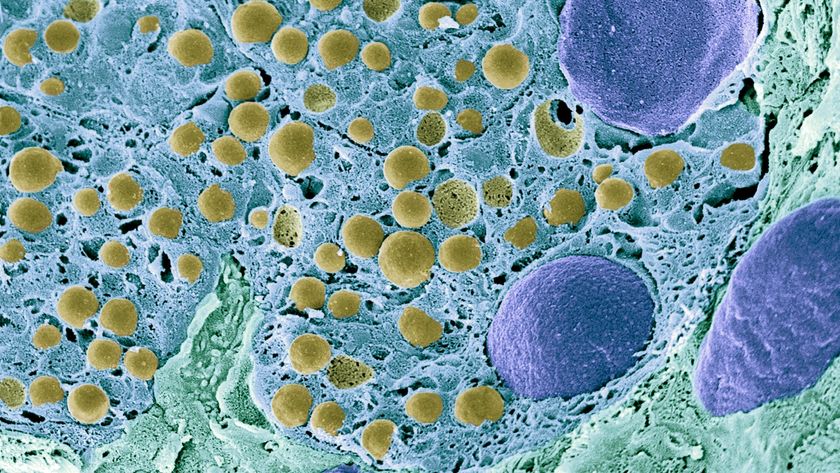Though Preventable, Diabetes Prevalence Soars

Chances are, you forgot to mark March 25 on your calendar this year as the 20th annual Diabetes Alert Day. Despite being a top killer and one of the most expensive diseases in the history of mankind to treat, diabetes is as entrenched as deeply in the American psyche as medieval Liechtenstein history. More than 20 million Americans, or 7 percent of the U.S. population, have diabetes, but more worrisome is the fact that an additional 20 percent are pre-diabetic. Scarier yet, 40 percent of U.S. adults ages 40 to 74 are pre-diabetic. Diabetes is the leading cause of adult blindness and a major cause of amputation, nerve damage and kidney disease that requires dialysis. The total estimated cost of diabetes in 2007 was $174 billion, according to the American Diabetes Association. That's about as much as the cost of all cancers combined. Happy Diabetes Alert Day, everyone. All about food It is perhaps fitting that Diabetes Alert Day, the fourth Tuesday every March, coincided so closely this year with Easter, a once traditional religious holiday now more resembling a shotgun marriage between Halloween and Thanksgiving, with its chocolate eggs and bunnies and ample honey-glazed hams. Although there is a strong genetic component, diabetes is closely tied with poor nutrition and a sedentary lifestyle. About 80 percent of diabetics are overweight or obese, according to the National Institute of Diabetes and Digestive and Kidney Diseases. The term diabetes, without a qualifier, usually means type 2 diabetes, the largely preventable variety comprising up to 95 percent of all cases, in which something slowly goes awry with the body's ability to metabolize glucose, or blood sugar. The hormone insulin carries glucose into muscle cells, where it is used as a fuel. Insulin also regulates fat and liver cell functions. Usually with type 2 diabetes, cells become desensitized to the presence of insulin for reasons unknown, a condition called insulin resistance. Some type 2 diabetes is caused by a lack of insulin. New disease, old genes Type 2 diabetes, or at least a major variety called diabetes mellitus, has been known for millennia. The Romans and Indians noticed that a diabetic's urine attracted bees and ants because it was sweet from the undigested glucose. Still, diabetes was rare through the ages. In Mexico, diabetes hardly existed a generation ago. Now it is the number one killer there. No one saw it coming. Mexican Health Secretary Jose Cordova said late last year that diabetes will bankrupt his country's health system in the next decade if nothing is done to improve the situation. The cost of providing care is 34 percent of Mexico's budget for social services. The cost doubles every five years, and the death rate increase 3 percent each per year. If Mexico gets its own Diabetes Alert Day, they might call it "sinko de mayo," roughly translated as "toss that mayo down the sink." Risk factors, being human You can blame genetics —researchers have found several genes associated with diabetes—but these genes didn't materialize out of thin air. Diabetes was unheard of across the South Pacific and among native populations of North America only a few generations ago. Today diabetes rates within these populations are as high as 50 percent. The culprit has been the introduction of western diets, high in sugar and other simple carbohydrates. The American Diabetes Association encourages visitors to its website to take its Diabetes Risk Test. The first question on the Risk Test should be, are you human? We are all at risk when we subscribe to a diet heavy on processed foods, which break down quickly into glucose and tax the body's ability to manufacture enough insulin, or heavy on fat and calories, which causes hormonal changes that influence insulin resistance. Just as cigarettes can cause lung cancer in some but not all smokers, our lifestyle is causing diabetes. Lung cancer rates dropped when we stopped smoking, not when we found the genes associated with lung cancer. Similarly we can prevent many cases of diabetes by getting to its root cause.
Christopher Wanjek is the author of the books “Bad Medicine” and “Food At Work.” Got a question about Bad Medicine? Email Wanjek. If it’s really bad, he just might answer it in a future column. Bad Medicine appears each Tuesday on LiveScience.
Sign up for the Live Science daily newsletter now
Get the world’s most fascinating discoveries delivered straight to your inbox.

Christopher Wanjek is a Live Science contributor and a health and science writer. He is the author of three science books: Spacefarers (2020), Food at Work (2005) and Bad Medicine (2003). His "Food at Work" book and project, concerning workers' health, safety and productivity, was commissioned by the U.N.'s International Labor Organization. For Live Science, Christopher covers public health, nutrition and biology, and he has written extensively for The Washington Post and Sky & Telescope among others, as well as for the NASA Goddard Space Flight Center, where he was a senior writer. Christopher holds a Master of Health degree from Harvard School of Public Health and a degree in journalism from Temple University.











